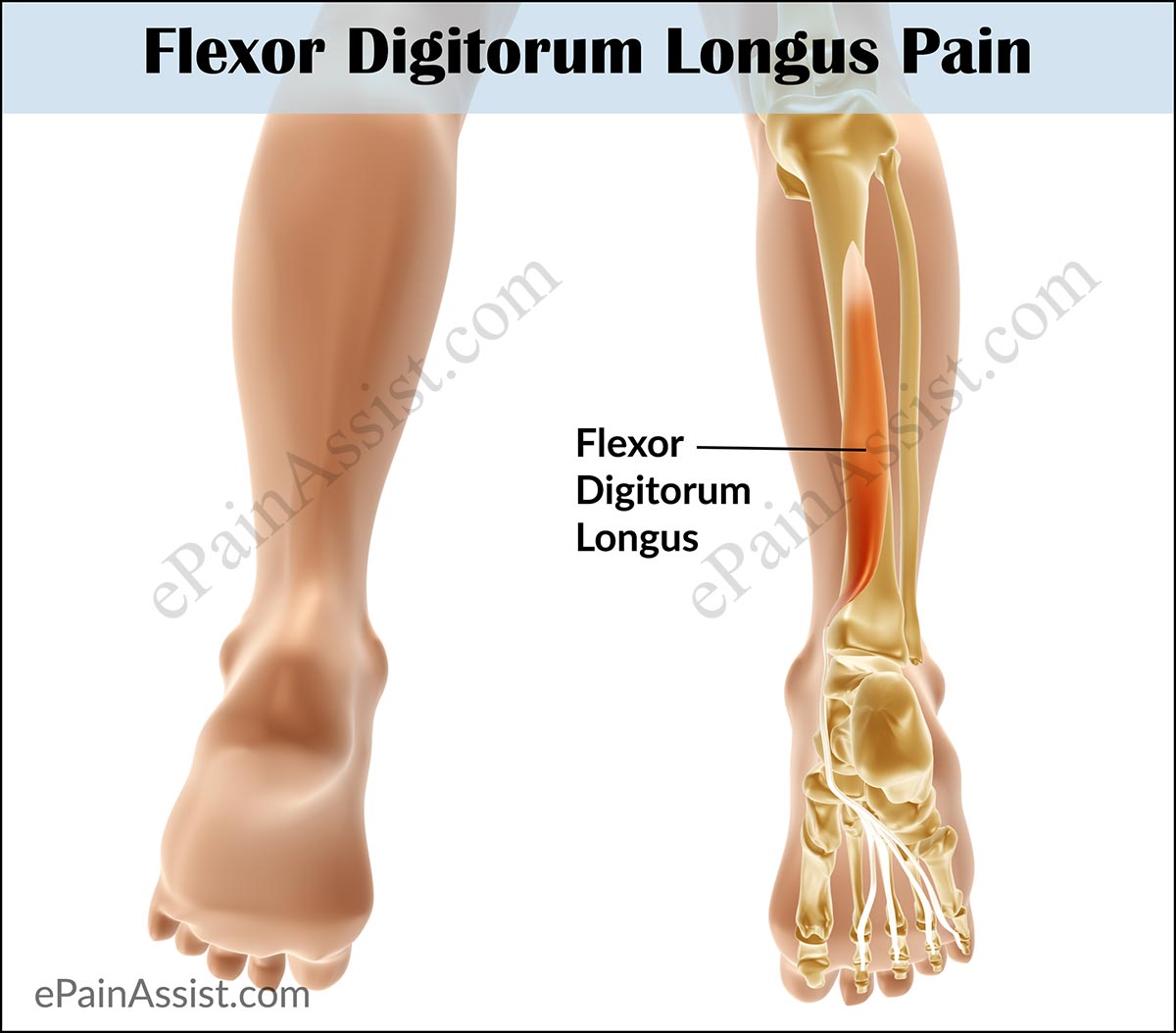What is Flexor Digitorum Longus Muscle and What is its Function?
The location of the Flexor Digitorum Longus Muscle is on the inner part of the leg along side the tibial bone. Anatomically speaking, the leg has two bones which are the tibia and the fibula of which the tibia is the larger of the two bones of the leg and is also termed as the shinbone. Now coming to the Flexor Digitorum Longus Muscle, this muscle is quite thin at its origin but becomes thick as it travels its course. This muscle stems from the tibia and courses along the leg to the sole of the foot and into the ankles before it then divides into four different parts in the form of tendons. The function of the Flexor Digitorum Longus Muscle is to facilitate movement of the foot. It also allows curling of the toes so that the toes can grip the surface of the ground and maintain balance of the body so that a person does not fall, especially when the surface is not even.[1]
Flexor digitorum longus pain can occur with a trip and fall on uneven surface when the toes are not able to grip the surface totally. One can also injure the flexor digitorum longus muscle while running on a beach in the sand without any footwear making the muscle vulnerable for injuries. In case of flexor digitorum longus pain or strain, the patient will find it tough to walk and will have excruciating pain in the feet and ankles. Support braces along with warm compresses are the most preferred way of treating flexor digitorum longus pain or strain.[2]

What are the Signs and Symptoms of Flexor Digitorum Longus Pain?
Apart from pain in the Flexor Digitorum Longus Muscle, there are also certain other symptoms that are also caused which may point towards a Flexor Digitorum Longus Muscle Strain are:
- Pain in and around the balls of the foot
- Episodes of cramping of the foot
- Visible clawfoot deformity in some cases.[3]
What Can Cause Flexor Digitorum Longus Pain?
Some of the activities that may result in Flexor Digitorum Longus Pain are:
- Ambulating on uneven surfaces can result in injury to the flexor digitorum longus causing pain
- Wearing shoes that are of inappropriate fit or have worn out
- Running barefoot in sand or in beaches where a lot of pressure is put on the flexor digitorum longus muscle can also cause pain.
Risk Factors of Flexor Digitorum Longus Pain
There are also certain medical conditions that may result in flexor digitorum longus pain. These conditions are:
- Tarsal tunnel syndrome
- Clawtoe deformity
- Plantar fasciitis
- Plantar warts
- Gout
- Diabetic Neuropathy
- Ankle Sprains
- Peripheral Vascular Disease
- Deep Venous Thrombosis.[4]
What is the Treatment for Flexor Digitorum Longus Pain?
Below mentioned are some of the treatment options for flexor digitorum longus pain:
Cold Therapy to Treat Flexor Digitorum Longus Pain: There are many forms of gels and cold packs available in the market and over the counter which can go a long way in helping with treatment of flexor digitorum longus pain or strain. The gels that are available are normally used immediately after an injury or strain to the flexor digitorum longus muscle as it immediately cools the area and prevents swelling from developing in the area. The gel is used by rubbing it at the injured site and the surrounding areas.
Warm Therapy: Warm compresses or gels that generate warmth in the injured area of the flexor digitorum longus muscle are also helpful in soothing flexor digitorum longus muscle pain. These compresses may be applied to the affected area two to three times a day. It should be noted here that both cold and warm compresses cannot be applied together as they may result in development of blisters.
Braces/Splints for Flexor Digitorum Longus Pain: There are a lot of braces and splints available over the counter in the market which help support the lower leg muscles. These braces and splints also provide necessary compression to the flexor digitorum longus muscle which helps in reducing the inflammation and thus control the pain. These braces or splints can be put in the shin area of the leg to help control flexor digitorum longus pain.
Compression Wraps: Compression wraps are also a good option to control flexor digitorum longus muscle. These wraps are readily available over the counter and can be put in the shinbone area of the affected leg. These wraps compress the strained muscles and provide relief from the pain. Compression Wraps can be hot as well as cold and both are equally useful in getting rid of flexor digitorum longus pain.[5]
